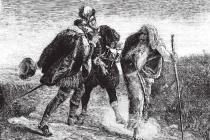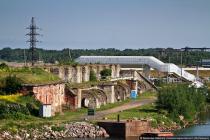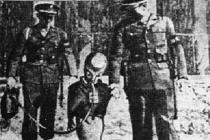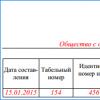Plant nursery "Sign of the Earth"
Landscape design of the site
Landscape design of a site is a real art, which involves a whole group of specialists. Landscape design is distinguished by individuality, because you are unlikely to find two identical plots: each house with its surrounding area and landscape is unique. Therefore, designers and planners create a landscape design that is suitable only for you and where all your dreams are realized. Landscape design is only limited by your imagination. For example, you need to beautifully decorate your terrace for a pleasant pastime. Or maybe you dream of a small pond with a cascade of murmuring water. If the project includes a swimming pool, then a changing cabin is needed, and the ground around the entire perimeter must be covered with safe materials.
Having equipped a fountain, you can listen to the sound of falling water. Some people do not need the presence of ponds on their plot, then a landscape design specialist can create the appearance of water with the help of a “dry” stream. The imagination of our landscape designers is limitless, and a photo gallery of our completed projects will help you in determining what your summer cottage should be like. Our company employs creative individuals who are experienced and highly qualified specialists who are ready to fill your garden with life, which will bring the joy of communicating with it for many years.
Our studio landscape design strives to preserve and improve the existing natural environment on the site. In this regard, each tree, shrub or part of the relief, at your request, will become integral organic elements of the new garden design. Our specialists love their work and will be happy to provide any assistance!
Nursery ornamental plants
We are engaged landscaping personal plots, dachas, suburban and urban areas. Our task is integrated approach to landscaping. We are ready not only to give you beautiful and adapted plants, but to deliver them and plant them.
Our plant nursery employs only competent and qualified specialists in various fields. Each of us has unique knowledge of planting and replanting plants, pruning trees and shrubs, we will tell you how to properly care for your garden and give recommendations on landscape design.
Master class “Firebird” made from natural material in three versions. Master class with step by step photos
Petrova Olesya, 12 years old, student of the “Phyto-design” mug.Supervisor: Gorina Svetlana Valentinovna, teacher additional education,
MKUDO Surovikino House of Pioneers and Schoolchildren.
Autumn is a wonderful time of year, when the foliage on the trees changes color, the fruits ripen, and the seeds ripen. It’s nice to go on an excursion to the forest in clear weather, where you can pick leaves of different shapes and colors for future compositions.
IN this master– in class I demonstrate three versions of the composition “Firebird”.
This master class is intended for younger and middle children school age, teachers and parents.
Purpose: interior decoration, gift.
Target: production of a composition from natural material in the form of a panel “Firebirds”.
Tasks:
- develop perseverance,
- develop Creative skills, fantasy, imagination.
“Firebird” from ash seeds. Master class with step-by-step photos
The seeds of the ash tree are in the form of lionfish, very convenient for making crafts, they are stored well, and can be used in winter.

- ash lionfish,
- millet,
- chickpeas,
- mash,
- colored cardboard,
- scissors,
- gouache,
- PVA glue,
- brush.

Let’s draw “Firebird” on colored cardboard.

Let's color the lionfish blue.

Let's put green dots on the blue lionfish.

Glue the painted lionfish onto the “Firebirds” outline. Glue without gaps, lionfish tightly to each other.

Glue the next row, covering the previous one.

In this way we glue the tail completely.

Cover the body of the bird with blue winged wings.

We will cover the entire body of the bird with lionfish without a gap in blue.

We continue to cover the neck with blue lionfish. Break the unpainted lionfish in half and glue the beak.

Cut the blue lionfish in half. Glue the head in flat pieces in a circle.

We will paint the millet yellow.

Glue the colored millet onto the tail at the green dots.

Glue small twigs and mung beans on top of the head.
Glue it where the eye should be.

Let the glue dry.
The composition is ready.


Tail close up.

“Firebird” from the side.


“Fire bird” made from dried autumn leaves. Master class with step-by-step photos
It is advisable to collect leaves for the composition in warm sunny weather. So that there is as little moisture as possible outside. The collected leaves can be dried in old books. Place an autumn leaf between the sheets of the book, laying out the leaves in one layer. Do not stack leaves on top of each other, otherwise they may stick together. You need to put a press on the book, usually two bricks. After two weeks, the leaves are ready for use.
It is advisable to store dried leaves in boxes or envelopes in a dry place.
The leaves keep well and you can collect a large number of beautiful leaves and use them in compositions several years later.

To complete the composition you will need the following tools and materials:
- dry leaves of different colors and shapes,
- dry rose petals,
- PVA glue,
- scissors,
- cardboard white.

On white cardboard we will draw the outline “Firebirds”.

Glue the longer leaves onto the “Firebirds” outline tightly to each other.

Glue leaves of a different color and smaller size on top.

Glue the next row, the leaves are the same as in the first row, but narrower in size.

We will shade the wingspan with yellow leaves, gluing them tightly to each other.

Using leaves of a darker color, we will glue the edging of the wings.

After cutting off the leaves, lay out the neck of the bird.

Cut a triangle out of a brown sheet and glue the beak.
Glue the head in a circle of leaves yellow color.

Cut out drops from rose petals and glue one drop onto each leaf.

Cut out circles from yellow rose petals and glue them into each drop.

Let the glue dry.

Glue a tuft of green leaf onto the head, glue an eye by cutting out a circle from a rose petal.

The composition is ready.

Wing close up.

Tail close up.


“Fire-bird” from seeds and cereals. Master class with step-by-step photos
It is advisable to wash and dry the collected fruit seeds. Can be stored in bags.

To complete the composition you will need the following tools and materials:
- pumpkin seeds,
- melon seeds,
- seeds of watermelon,
- flower seeds,
- millet groats,
- mung bean cereal,
- chickpeas,
- pistachios,
- PVA glue,
- black cardboard.

On black cardboard we will draw the outline “Firebirds”

We will seal the fragment on the wings in the form of an arc with millet.

Cover the bird's head with black flower seeds.

Cover the top of the neck and the outline of the wings with melon seeds.

We cover the outline of the wings from below with pistachio scales.

Spread five pumpkin seeds on the tail. Draw a drop of PVA glue around the pumpkin seed and cover it with millet. Let the glue dry.

Glue the seeds of the dawn flowers at the base of the drop fragment.
In the wings, between the arc of millet and the pistachio scales, glue mung bean groats evenly.

Between the wings of the bird's body we glue brown flower seeds.
Decorate the mung bean tail with green stripes.
DIY Firebird: step-by-step master class for children on making panels from natural materials.
DIY Firebird
Materials and tools for making DIY “Firebird” crafts
To make the firebird we will need:
— Colored cardboard
— Firebird stencil for applique (you can draw it yourself or download a ready-made one)
— Plasticine
— Natural materials.
We used natural materials in the firebird applique:
- ash seeds,
- flax seeds,
— buckwheat,
- bird feathers.
You can use whatever you see fit in making crafts. For example, make your firebird only from cereals or only from seeds.
How to make a firebird from natural materials with your own hands: step-by-step description
The Firebird is made in mixed media with elements of plasticineography and appliqué using a ready-made stencil.
How to do it with children:
Step 1. Apply the firebird stencil to colored cardboard and trace it.

Step 2. Fill the template with plasticine. To do this, tear off small pieces of plasticine and form small balls. We spread the balls on the cardboard with a stack or with our fingers, filling the firebird template with a thin layer of plasticine. We try not to go beyond the boundaries of the drawing so as not to leave stains.
Step 3. Glue ash seeds onto the silhouette of the firebird, starting from the tail. We form the wings. The body of the bird can be decorated with seeds or cereals. Instead of ash seeds, you can use willow leaves, they are also thin. The panel is ready!


The second option for making a firebird with your own hands
You will learn another option for making a very original three-dimensional 3D craft “Firebird” with your own hands together with children from natural materials in the master class
We wish you pleasant moments of creativity and inspiration! See you again on the “Native Path”!
Author of the master class: This work was sent to our “Autumn Workshop” competition by a reader of “Native Path”, additional education teacher Natalia Chavdarovna Tsvetkova (Vologda region, Cherepovets). The article contains photographs of crafts made by children aged 7-9 years from Natalia Chavdarovna’s studio: the association “The World Around Us” MBOU DOD “Palace of Children and Youth Creativity named after A.A. Alekseeva.
More interesting ideas for crafts with children you will find in the categories:
Since ancient times, Ash has been considered a conductor between worlds. Ash resurrected lives, endowed people with magical powers, and drove away evil spirits.
The tree united opposites and was an allegory of eternal life.
Ash wood was used in fortune telling. Amulets and magic runes were made from it.
In the old days in Scandinavia they believed that the gods lived in Asgard, a country above the clouds. In the middle of the country rises a huge Ash tree, growing through the worlds. An old tree named Ygdrazil holds up the firmament and covers the sacred spring with its roots.
If the tree dies, the transcendental kingdom will collapse, and the sacred waters will flood all living things.
names of ash
Ash received its name due to the type of crown. Despite the lush vegetation, the leaves of the Ash tree transmit a sufficient amount of sunlight, so it is always clear and light under the tree.
This property makes it possible to sunbathe under the crown for many hours on a bright sunny day and not be afraid of getting burned.
The Latin name for Ash is Fraxinus, which means “Ashes” in Latin.
Where does Ash grow?
There are 70 species of Ash in the world. The most common in our country is Common Ash.
The tree is found throughout Russia, in Crimea and the Caucasus. Different kinds plants can be found in North Africa and North America, Eurasia and the Far East.
Ash can be found in parks and gardens.
In the wild, this tall and stately tree prefers fertile, moderately moist soils. Often Ash can be found in the middle of a field or along a sandy road.
What does Ash look like?
Ash is a tall tree up to 30 meters in height with a lush crown. In the southern regions there are representatives up to 60 meters tall. The crown allows sunlight to pass through well thanks to its sharp and long leaves and sparse gnarled branches. The trunk volume reaches 1 meter.
The bark of the tree is ash-gray in color and is distinguished by its smoothness and unusual odor. The bark and leaves of this tree contain a substance called coumarin, which gives the tree the aroma of fresh hay. That is why a tired traveler can breathe easily and calmly under a tree.
In spring, Ash turns purple. After a few weeks, future fruits - lionfish - begin to form.
These flat storehouses of seeds will only fall to the ground in winter.
When Ash Blooms

Flowering begins in April-May and lasts until the leaves bloom. Thanks to the large number of flowers and pollen, Ash is an excellent honey plant.
The fruits ripen in September or October and can remain on the branches until early spring, helping small birds from hunger. These fruits contain large amounts of fats and proteins.
The tree begins to bear fruit after an average of 25 years and can live up to 300 years. Ash leaves fall in late autumn, retaining their green color.
HEALING PROPERTIES OF ASH

IN medicinal purposes leaves, fruits, roots and bark of the tree are used.
A decoction of the roots relieves chronic respiratory diseases.
A decoction of the leaves has a sedative effect and is used in the treatment of disorders nervous system body.
Tea made from leaves or powder from Ash seeds has a diuretic effect.
An infusion of Ash leaves is a natural means of increasing male power.
In addition, preparations from Ash have tonic, hemostatic, antimicrobial, anthelmintic and other effects.
Application of Ash
Ash wood has a number of advantages compared to other species. Durable, light, moderately drying, wood has been used as a material for a wide variety of crafts for a long time.
Due to their flexibility, Ash branches served as an excellent material for bows of the Indians of North America. In Russia, Ash was used to make wheel rims, bend skis and rocker arms.
In modern industry, high impact strength has made it possible to use wood for various sports equipment. Ash is used to make billiard cues, baseball bats, racing oars, skis and even gymnastic bars.
Thanks to its beautiful pattern, Ash is used as veneer for cladding expensive furniture. When stained, veneer is difficult to distinguish from olive wood.
The high strength of wood makes it possible to produce railings, window frames, trim and furniture.
Ash is used for landscaping especially polluted areas of cities.
In the Caucasus, Ash fruits are pickled instead of capers and used as a seasoning.
Sweet Ash sap, like Maple sap, is a valuable source of sugar.
Contraindications
Despite all the benefits of fruits, bark and leaves, Ash is considered a poisonous plant, so it is necessary to use certain infusions and decoctions with great caution.
An overdose of Ash-based drugs may cause abdominal pain, hepatic colic, dizziness and nausea, so before using Ash to treat any ailments, consult a specialist.














